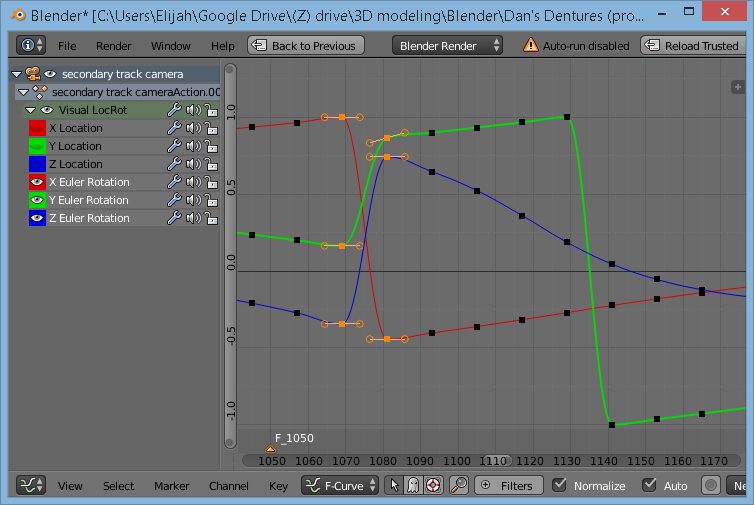Maybe this question was asked in some other post, and if so feel free to direct me to it. But, help please :( .
For TLDR, skip to the 2nd to the last paragraph.
I have an animation project consisting of an object which is orbited (in a curvaceous way) by a first camera on a track. the track goes all around the object, as seen below (though it looks like a closed loop, it's actually a bezier curve that has a tiny opening). The first camera has a damped track constraint to an empty in the object. It also has a locked track constraint to an empty on another, nearly identical track above this track. The empty on the above track has almost the exact same movement and speed as the first camera. It is meant to keep the first camera pointing...I guess, up. (If the two tracks are identically aligned, it can be problematic at a couple points in the animation, triggering the camera to "snap rotate", but I'll treat this as another matter.)
Another camera copies the transforms of the first camera on the first track, and this "copy camera" is used by a Python script to insert VisualLocRot keyframes for the duration of the animation.
The script that uses the copy camera, before it finishes inserting each keyframe, does a "camera to view selected" on the subject being orbited, which fits the entire object to the vertical or horizontal edges of the camera view.
Problem is, I'm getting what I call "rotation artifacts", pictured below, in the F-curves. Just by looking at the selected keyframes, I can kind of tell what's happening, but I don't understand why Blender is doing it that way. (Why can't the curves keep going up or down, without breaking like that?) I don't know how to fix.
I hope to soon grasp all the algebra and trig I need to understand this problem better. Are quaternions my magical unicorn solution? Please let me know if I've done a bad job of explaining this, or if you need more info.


